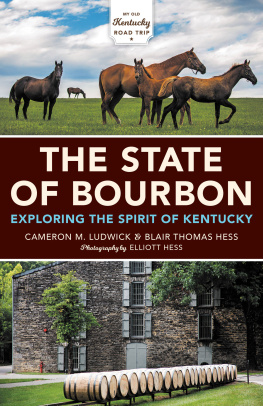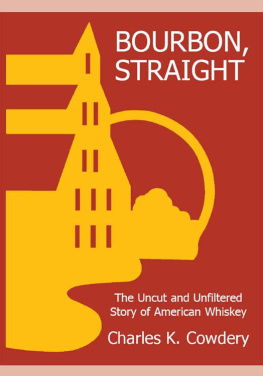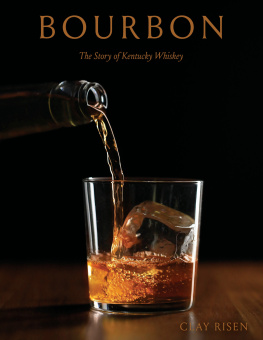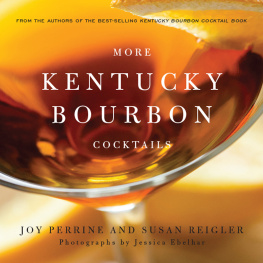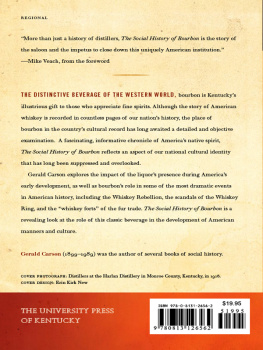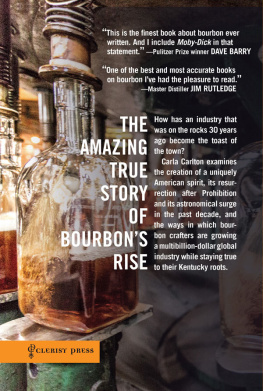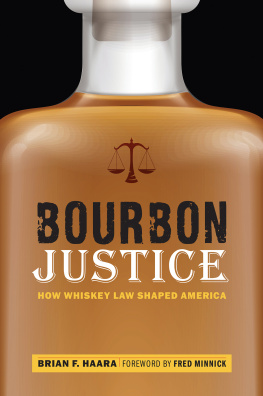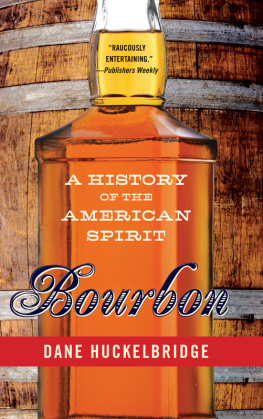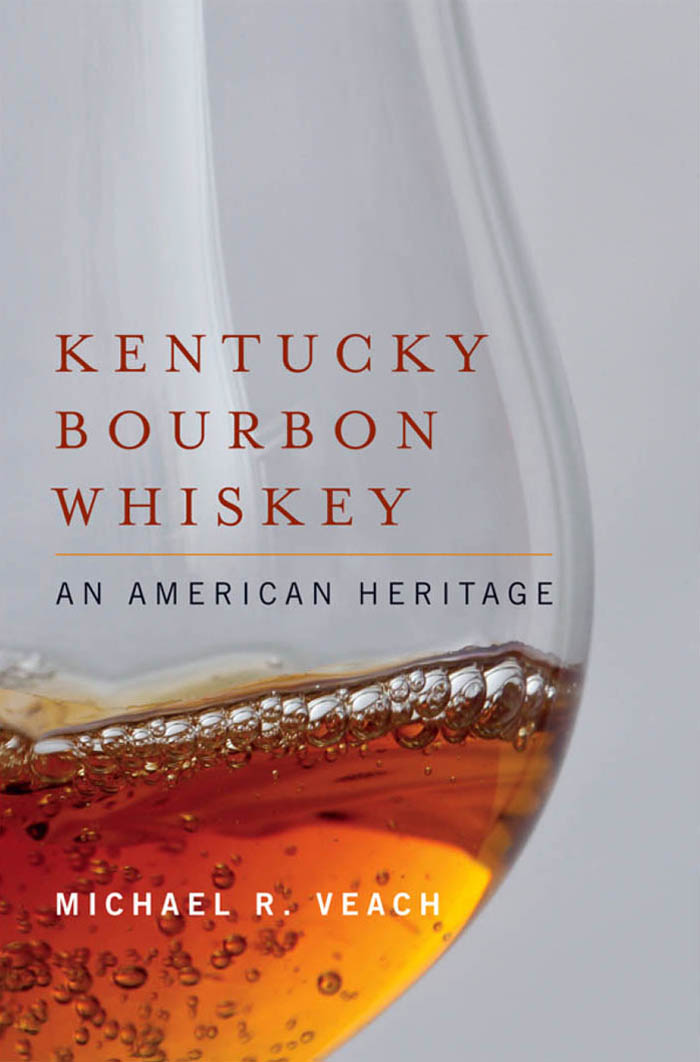Kentucky Bourbon Whiskey
KENTUCKY BOURBON WHISKEY
AN AMERICAN HERITAGE
M ICHAEL R. V EACH

Copyright 2013 by The University Press of Kentucky
Scholarly publisher for the Commonwealth, serving Bellarmine University, Berea College, Centre College of Kentucky, Eastern Kentucky University, The Filson Historical Society, Georgetown College, Kentucky Historical Society, Kentucky State University, Morehead State University, Murray State University, Northern Kentucky University, Transylvania University, University of Kentucky, University of Louisville, and Western Kentucky University. All rights reserved.
Editorial and Sales Offices: The University Press of Kentucky 663 South Limestone Street, Lexington, Kentucky 405084008
www.kentuckypress.com
17 16 15 14 13 5 4 3 2 1
Cataloging-in-Publication data is available from the Library of Congress.
ISBN 978-0-8131-4165-7 (hardcover : alk. paper)
ISBN 978-0-8131-4171-8 (epub)
ISBN 978-0-8131-4172-5 (pdf)
This book is printed on acid-free paper meeting the requirements of the American National Standard for Permanence in Paper for Printed Library Materials.

Manufactured in the United States of America.

| Member of the Association of
American University Presses |
Dedicated to my father, James Veach,
and my nephew, Bryon Veach.
I wish they both could have seen
the finished product.
Contents
Preface
This book has been twenty years in the making. In the summer of 1991 I was a graduate student at the University of Louisville studying medieval history with a secondary field of public history. I had done an internship at the Filson Historical Society and was due to do another one in the 19911992 academic year. That is when Dr. Nicholas Morgan from United Distillers (UD) called the History Department looking for a graduate student to create an archive from some papers and artifacts at the Stitzel-Weller Distillery. The job was to last six thirty-five-hour weeks and pay $9.00 an hour. Needless to say, the offer was attractive, and I accepted. The job eventually turned into a full-time position that lasted until the end of 1996, when UD sold its bourbon brands and closed the archive.
As a native Kentuckian, I thought I knew a lot about bourbon whiskey, but soon after taking the UD archive job I realized how wrong I was. From my work with the archive I learned the basics of the history of bourbon. I also had excellent teachers in my Stitzel-Weller colleagues Ed Foote, Mike Wright, and Chris Morris. Ed taught me how bourbon was fermented, distilled, and aged; Mike what makes a good bourbon good and a bad bourbon bad; and Chris how to market bourbon and create new brands.
While working at the UD archive I came in contact with many other people in the industry. Al Young at Four Roses in particular began to come hear me any time I gave a talk on bourbon history. A friendship soon grew, and knowledge was exchanged. I also began a working relationship with the two curators of the Oscar Getz Museum of Whiskey History, Flaget Nally and Mary Hite, who were a wealth of knowledge about the museum collection and distilling in general, Marys father and grandfather having both been accomplished distillers, and Flaget having worked in the industry before joining the Getz staff. Thanks to my museum connection I was able to curate a number of exhibitions drawing on the UD collection and also to help organize the Bourbon Heritage Panel and the Master Distillers Auction as part of the museums Kentucky Bourbon Festival.
In 1997 I found myself unemployed, and Jim Holmberg at the Filson Historical Society hired me as a special collections assistant. I continued to work with bourbon history, kept up my connection with the Getz Museum and the Kentucky Bourbon Festival, and fielded questions about bourbon history from the many callers who had received my number from one of the distilleries. I also did some consulting work for several distilleries and contributed to bourbonenthusiast.com and other websites.
In 2006 the Kentucky Distillers Association made me a member of the Kentucky Bourbon Hall of Fame as a historian of the industry. This led Laura Sutton of the University Press of Kentucky to contact me in the spring of 2007 about writing this book. She convinced me that the book needed to be done and that it need not be abstruse or exhaustive. She pointed out that there was not a history of the industry in print and that a good survey would be well received. That is what I have attempted to provide.
The history of the bourbon industry is a rich one that mirrors the history of America. The Whiskey Rebellion reflected the troubles that the newly united states had coalescing under a federal government. The whiskey tax, which sparked the rebellion, was the first federal tax and prefigured all others, especially the federal income tax. The changes wrought by the Industrial Revolution can be seen as the modernization of distilling technology writ large. Even the general health of the bourbon industry mirrors that of the country as a whole, declining in bad economic and social times and reviving in good times. This book discusses all this and more. As noted, it cannot be, and is not meant to be, exhaustive. I will consider it a success if it simply leads the reader to a better understanding of the bourbon industry. Perhaps it will also inspire others to further explore the territory I have opened.
K ENTUCKY B OURBON W HISKEY
1
Farmer Distillers and the Whiskey Rebellion
Spirits were distilled in America long before the birth of the whiskey industry. Rum and gin were produced in cities along the Eastern Seaboard by colonists who had brought their stills with them to the New World. Whiskey came into widespread favor only with the end of the Revolutionary War and the beginning of the westward expansion, when the costs of transporting the ingredients over the mountains made rum and gin too expensive to produce. Whiskey could, however, be made from readily available local produce, and it became one of the most common of the home-produced spirits. In the early years of the westward expansion, stills were still manufactured in the East, and settlers had to bring them west with them. But demand soon grew large enough that coppersmiths began to manufacture them in western Pennsylvania and Kentucky.
The American pot still differed little from the European still, which had been in use for centuries. It was simply a large copper pot made to be fitted with a separate head and gooseneck that could be attached to the copper worm, a coil of copper tubing immersed in a barrel of water. The fermented mash, or distillers beer, which was made from grain, was poured into the pot, and the head was positioned on top of the pot and sealed to prevent the vapors from leaking through the joint. The beer was heated over an open fire, allowing the alcohol to vaporize and pass through the worm, where the water cooled the vapors, which became liquid again, allowing the alcohol to be collected and stored in a cistern. The whiskey could then be refined and made more palatable by distilling it a second timein either the same still or a second still called a


